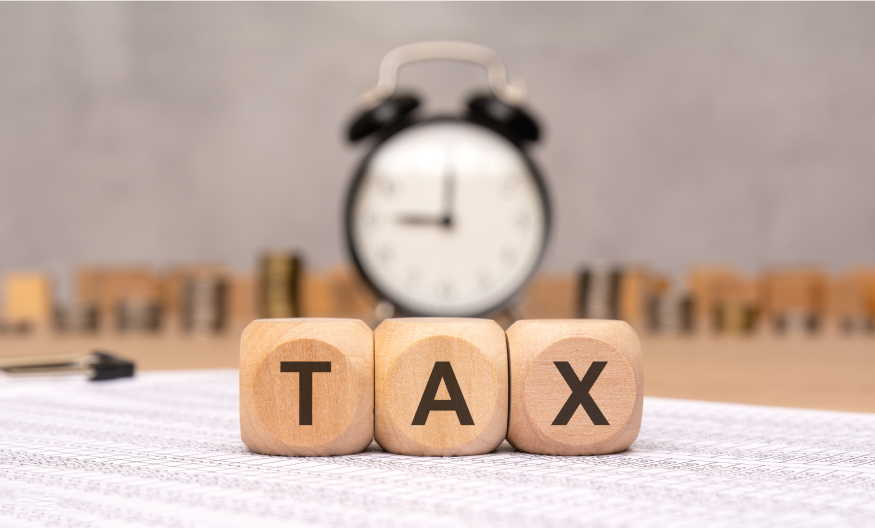
300 Main St., Suite 301
St. Simons Island, GA 31522
Hours:
Mon-Fri 8am to 5pm
Closed on Fridays
(June to Sept 1st)

Your Organizer

Your Organizer
Proper organization is key to making the tax preparation process smooth, efficient and stress-free. That is the expertise offered by Graham | Adams.
By getting your financial records in order throughout the year, you can avoid last-minute scrambling, maximize your deductions and ensure you file your taxes correctly. Here’s a comprehensive guide on how to organize for your taxes:
1. Keep Track of Your Income Sources
Start by organizing all your income-related documents. Income can come from various sources, and keeping everything in one place will make it easier when filing your tax return.
Common Income Sources:
- W-2 Forms (for employees)
- These show your total earnings and tax withholding for the year.
- 1099 Forms (for freelancers, independent contractors or investment income)
- 1099-NEC (nonemployee compensation)
- 1099-DIV (dividends)
- 1099-INT (interest)
- 1099-G (unemployment income, state refunds)
- K-1 Forms (for partnerships, LLCs or trusts)
- These report your share of income from partnerships or other pass-through entities.
- Other Income Statements
- Rental income, alimony, gambling winnings, jury duty pay and more.
- Tip:
Create a folder or digital file where you can store all these income documents as they arrive. Check that all income is accurately reported and include any income not covered by forms like 1099.
2. Organize Your Deduction and Credit Documents
Deductions and credits reduce the amount of tax you owe, so keeping track of them is essential. Depending on your personal financial situation, you may be eligible for various deductions and credits. Organize these receipts and documents to ensure you don't miss out on any potential savings.
Common Deductions to Track:
- Mortgage interest payments (Form 1098)
- Charitable donations (receipts, acknowledgment letters from charities)
- Medical expenses (for large expenses that exceed 7.5% of your income)
- Property taxes
(receipts for real estate taxes paid)
- State and local taxes (SALT)
- This includes state income tax, local income tax, and property taxes.
- Student loan interest (Form 1098-E)
- Common Tax Credits:
- Child Tax Credit
- Education credits (American Opportunity Credit, Lifetime Learning Credit)
- Earned Income Tax Credit (EITC)
- Child and Dependent Care Credit
- Energy-efficient home improvements (Receipts for improvements like solar panels or energy-efficient windows)
3. Maintain Records for Self-Employment or Business Income
If you run a business or are self-employed, tax preparation can be more complex. Keeping your business-related expenses organized will help reduce your taxable income and ensure you claim everything you're entitled to.
Common Self-Employment Deductions:
- Home office expenses (e.g., rent, utilities and internet)
- Keep track of the square footage used for business and total home size for the deduction calculation.
- Business expenses
- Receipts for office supplies, software, advertising, travel, etc.
- Vehicle mileage
- Track the business miles driven using a mileage log or app.
- Meals and entertainment
- Keep receipts and note the business purpose.
- Tip:
Consider using accounting software like QuickBooks or a dedicated business expense tracking app to log income and expenses. This can make tax time easier by automatically generating reports and simplifying deductions.
4. Keep Track of Your Investments
If you have investments such as stocks, bonds, or real estate, these need to be reported on your taxes, and you may owe capital gains taxes on any profits made from selling them.
Documents to Track:
- Brokerage statements
- These show your capital gains, dividends and interest income.
- Forms 1099-B (for securities transactions)
- Real estate transactions
- Keep records of the sale or purchase price, any improvements made to the property and closing statements.
- Tip:
If you’ve sold investments or property during the year, gather all relevant purchase and sale documentation so you can calculate capital gains or losses. Keep track of any reinvested dividends as well, as they may affect your overall tax liability.
5. Set Up a System for Receipts and Tax-Related Documents
Having a system to organize receipts and documents throughout the year is crucial. Whether you prefer a physical filing system or a digital one, staying organized will prevent you from missing any important documents.
Methods for Organizing Documents:
- Physical Filing:
- Use folders or a filing cabinet with labeled categories (e.g., income, deductions, business expenses).
- Store important documents, such as your W-2, 1099s and tax returns, in a secure location.
- Digital Filing:
- Scan your documents and store them in cloud-based services like Google Drive, Dropbox or Evernote.
- Use tax software or apps (e.g., Expensify, Shoeboxed) to upload and categorize receipts.
Tip:
Review your receipts monthly, so you’re not overwhelmed at year-end. This habit also helps to identify missed deductions early.
6. Review Your Withholding and Estimated Taxes
Throughout the year, check if the amount of tax being withheld from your paycheck is sufficient, or if you need to make estimated payments. Adjust your W-4 form with your employer, if necessary, especially if you have major life changes (e.g., marriage, buying a home or having children).
Tip:
If you’re self-employed, track your estimated tax payments quarterly and keep copies of payments made to the IRS.
7. Keep Previous Tax Returns on Hand
Your previous tax returns serve as a record and reference for the current year. Many tax preparers (or software) use the prior year’s return to help you prepare the new one.
Tip:
Store tax returns for at least three years in case of an audit, though keeping them longer is helpful if you have ongoing tax-related matters.
8. Call Graham | Adams
If your tax situation is complicated, or if you just want peace of mind, Graham | Adams is only a phone call away.


